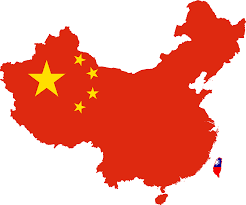A sudden sense of calm has seeped into Chinese markets, not from domestic cues but from afar, a slender ceasefire in the Middle East. That fragile pause in conflict is casting a long shadow across Shanghai and Hong Kong, hinting at a subtle but noteworthy shift in investor temperament as markets pivot from risk aversion to tentative optimism.
Markets rarely behave in isolation, yet that is precisely what’s unfolding across Greater China. In Shanghai, the Composite index has reached its highest point in six months, while Hong Kong’s Hang Seng has climbed to levels not seen since March. This surge marks more than a technical rebound; it reflects the region’s sensitivity to geopolitical shifts and energy market developments. With oil prices retreating as fears of wider Middle Eastern conflict abate, inflationary pressure on the import-reliant Chinese economy has eased, offering a breath of relief to investors.
The broader Asian equity landscape has mirrored the rally. Regional benchmarks such as Japan’s Nikkei and Australia’s ASX have also edged higher, buoyed by the same narrative: diminished geopolitical risk, cheaper oil, and, crucially, tailwinds for inflation-sensitive policy. In Greater China, this translated into meaningful gains for the Shanghai Composite and CSI300, while the Hang Seng moved even more decisively, climbing back into range-bound territory with renewed investor interest.
Domestically, the mood has shifted from defensive to opportunistic. Investors are already positioning for an anticipated pivot from the People’s Bank of China, following recent rate cuts and ongoing liquidity support. Shanghai may be testing new short-term highs, but what lies ahead may depend not just on headlines but on whether Beijing reinforces the positive momentum with further policy measures targeting consumption, credit flows, or local investment incentives.
Currency markets are telling a similar story. The onshore yuan has strengthened toward its firmest level in nearly a month as capital flows realign on improved sentiment. With the dollar softening on lower Treasury yields and more moderate inflation data out of the United States, Asian currencies are broadly benefiting. The yuan’s advance signals more than technical strength, it reflects an underlying vote of confidence that the country’s capital markets still appeal to global investors seeking diversification and emerging exposure.
Yet the underlying ceasefire remains tentative. Reports of violations between Iran and Israel have emerged even as the truce took effect, prompting caution. For Greater China’s markets, the message is clear: optimism will hold only so long as external risks remain contained. Even so, the current recalibration has unlocked a window of opportunity, one that aligns geopolitical relief with the prospect of domestic monetary accommodation.
For investors, the implications are clear. Geopolitical developments can drive immediate shifts in sentiment and asset flows, even in markets geographically distant from the source. The impact is magnified when combined with dovish central bank leanings. In China’s case, the convergence of foreign and domestic factors has created fertile ground for those with a strategic, long-duration perspective.
Sectors most likely to benefit include domestic discretionary and technology, particularly where local demand and yuan stability reduce import cost risk. Financials should also see support as bond yields fall and credit spreads narrow.
Fidelity China Special Situations PLC (LON:FCSS), the UK’s largest China Investment Trust, capitalises on Fidelity’s extensive, locally-based analyst team to find attractive opportunities in a market too big to ignore.





































